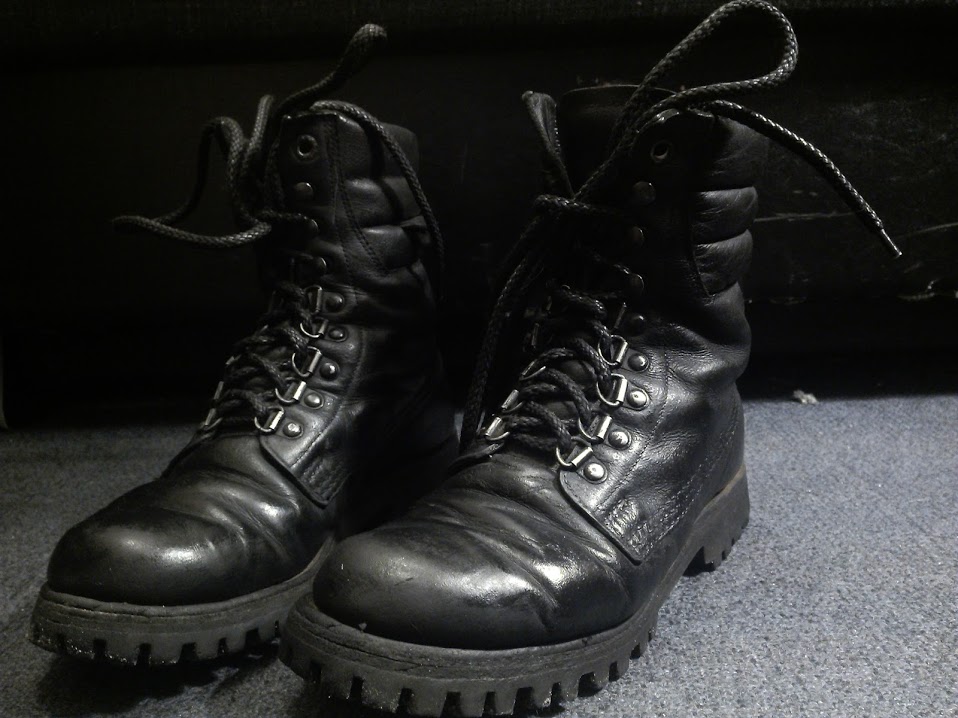
The Diversity of Modern Combat Boots
By Earl Tower
To most observers, modern combat boots seem to fall into roughly three categories: the classic black combat boot, the suede, rough leather desert boot, and the classic nylon and black leather jungle boot. An observer would not be blamed for thinking this is the reality of the American military footwear for combat since Desert Storm in 1991, yet the reality is much more complex, with many diverse options.
The black leather combat boot was introduced in 1951 by the U.S. Army to replace the russet brown combat boots of World War II, followed soon after by the U.S. Marine Corps adopting a similar boot. These were inspired by the World War II jump boots of the paratroopers. In 1962, all of the American services adopted black leather combat boots. These would remain the daily footwear standard with both battle fatigues and later battlefield dress uniforms until they later were replaced by all services in 2007.
Black leather combat boots were not as simple as they appeared to be. A water resistant version was introduced in 1984, to be followed by a hot weather variant in 1989. The U.S. Army and the USMC introduced the intermediate cold/wet boot in 1994, with continuous upgrades until 2005. GORE-TEX lined variants of temperate weather boots were also introduced in the mid-nineties as a material upgrade for water resistance. All of the services issued steel and plastic cap varieties of all versions for safety boots. Many of these versions can still be found on the civilian market, and work quite well for many roles.
The black leather combat boot was phased out as being suitable for modern warfare due to the black leather not being suitable with camouflage uniforms or night vision technology. Black leather boots still see extensive use in the military for noncombat usages, such as flight line work, where they have proven more resistant to chemical breakdown. The classic black leather’s appearance, when shined, has still made them very desirable for ceremonial wear in the American military in honor guards and ceremonial guard troops.
The second kind of combat boot often recognized by the public is the partial leather and canvas jungle boot. Made from numerous materials, the jungle boot was developed through several iterations from WWII through Vietnam. It started off as a leather lower half with green canvas for the upper half, with nylon replacing the canvas later. In later years, the jungle boots would be made with black nylon or canvas to fit the military image created by the black leather combat boot.
The jungle boot introduced many details to the combat boot to deal with hot and humid weather, such as side vents and drains to keep the foot dry. Some versions even introduced steel plates in the heels for protection against stake traps in Vietnam. From the Vietnam War up to Desert Storm, the jungle boot designs remained mostly unchanged, proving through their light weight and durable design to be preferable for hot climate combat more than the all-leather combat boots. Many modern designs still remain on the civilian market.
The third boot often easily identified by the public is the desert boot. The desert boot was adopted by the U.S. military services during and after Desert Storm. The desert boot design evolved out of the jungle boots. The U.S. Army found a need for a lightweight but durable boot design that would hold up in the desert, yet still allow the wearer not to have wear problems due to overheating.
The desert boot is made of a rubber sole with rough leather side facing out for the lower half, and nylon material for the upper part of the boot. Worn with the desert camouflage uniform, the suede desert boot would be standard wear for the U.S. military in the Middle East for 20 years.
The desert boot designs were found to be effective for the demands of modern combat, being low maintenance and blending well for the demands of camouflage. The rough surface also proved to not shine in the night-vision capacities of modern warfare the way black leather boots did. Both the U.S. Army and Marine Corps used the basis to develop new modern combat boots to go with their new combat issued uniforms. The new boots have rough leather outsides, nylon upper halves and rubber soles.
The end result is a modern combat boot often mistaken for the desert boot by civilian observers. The modern combat boot is issued in a hot weather desert version with side vents, but also a temperate weather version lined with GORE-TEX for water resistance and warmth. Cold-weather variations with more lining have also entered the military inventory, as have safety-toed versions. The U.S. Army and Marine Corps have their own versions in desert tan and olive drab. The USAF has done the same, but with sage green coloration.
From the 1980s to the present, many combat boot types have found common usage with civilian populations. While many of these designs seem very similar, the versatility and diversity in the modern combat boot provides a plethora of functionality. In any terrain, any climate or any usage, there is a modern combat boot version that will serve its wearer well.
-Earl Tower works as an information technologies engineer. He served over 20 years in the U.S. Air Force in both active and guard components. His interests are bushcraft, writing, and history.





